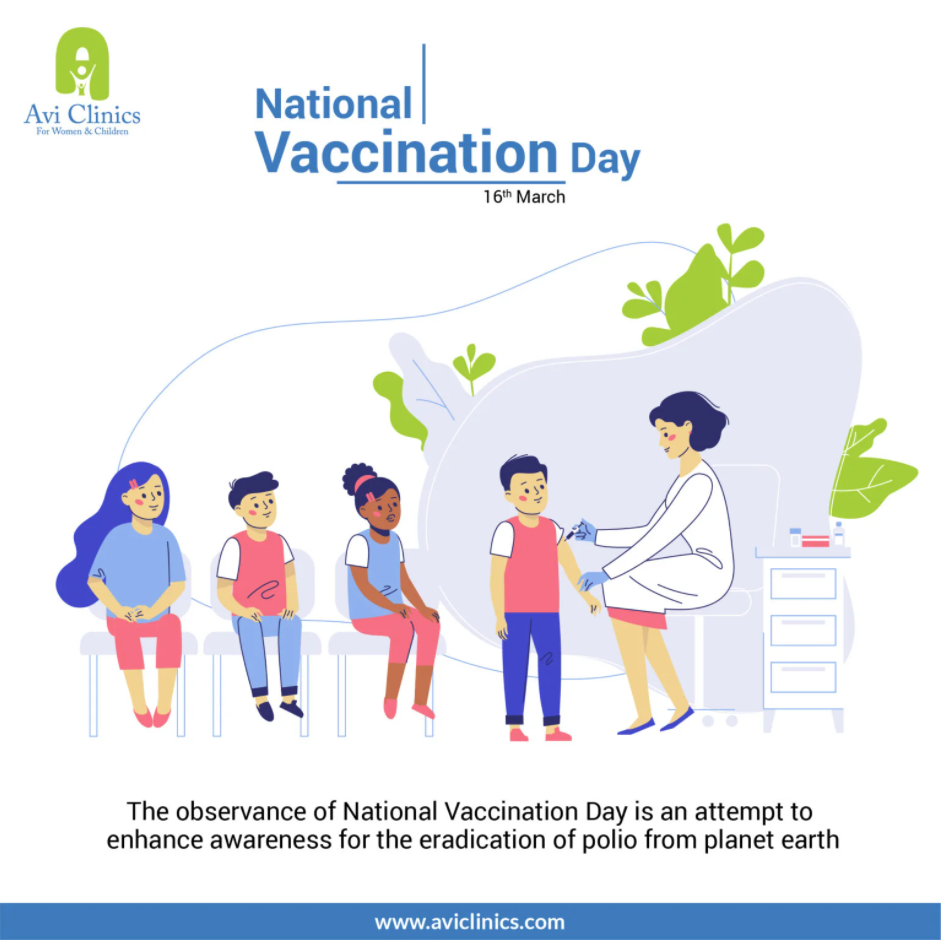~ Yashika Sehgal
History
National vaccination day also commonly referred to as National Immunisation Day is celebrated every year on 16 March. The first dose of Oral Polio Vaccine was given in the year 1995 on this day. Polio is a heart-wrenching disease that affects our entire planet. This day is celebrated every year to spread awareness about this disease as well as millions of children are given free polio vaccinations to eradicate this disease from our planet. In order to sustain the eradication, Pulse Polio immunization campaigns are organised by the Government of India according to standards set by the World Health Organization (WHO).
India’s Journey to Become Polio-Free
India once a polio-endemic country, became polio-free in 2012. The Pulse Polio immunisation programme was launched in the year 1994 to make vaccination available to all children below the age of 5. There was an estimated 1.5 lakh registered polio cases in India in 1995. To reduce this increasing number, a lot of measures were undertaken. A team of 23 lakh polio assistants was created, thirty-three thousand surveillance centres were built and a door to door campaign was held to give polio drops to children.
Since 2011, no case of polio has been registered in India. The WHO in 2012, removed India from the list of countries with active endemic wild poliovirus transmission. Two years later, the South-East Asia Region of the WHO, which also includes India, was certified polio-free.
Types of Polio Vaccines in India
In India, there are two types of vaccines that are being administered. One of them is IPV (Inactivated Polio Vaccine) and the other is OPV (Oral Polio Vaccine). IPV is a wild type of poliovirus strain that is given along with other vaccines including Hepatitis B, Diphtheria, Pertussis (whooping cough), Tetanus, Haemophilus, and Influenza. IPV is more efficient as compared to OPV. IPV increases the intestinal immunity of the kids who have been immunized priorly to OPV.
Mission Indradhanush
- Mission Indradhanush was launched in December 2014 by the government of India with the aim of achieving full immunization coverage for all children and pregnant women at a fast pace. The ultimate goal of Mission Indradhanush is to ensure that full immunization with all available vaccines is provided to children up to two years of age as well as to pregnant women. The Government of India has recognised 201 districts as a high focus across 28 states in the country. These high focus districts have the highest number of partially immunized children and children who are not immunized at all.
- The government of India has introduced Intensified Mission Indradhanush 2.0 to boost the routine immunization coverage in the country and also to ensure that unreached sections of the society are reached with all the available vaccines in the country and accelerating the coverage of children and pregnant women in the identified districts and blocks from December 2019-March 2020. The IMI 2.0 aims to achieve targets of full immunization coverage in 272 districts in 27 States and at the block level (652 blocks) in Uttar Pradesh and Bihar among hard-to-reach and tribal populations.
Some of the features of Intensified Mission Indradhanush 2.0 are:
- Enhancing political, administrative and financial commitment, through advocacy.
- Enhancing focus on left-outs, dropouts, and resistant families and hard to reach areas.
- Increasing Inter-ministerial and inter-departmental coordination.
- Focusing on urban, underserved population and tribal areas.
Covid Vaccination Drive in India
Our nation began its covid vaccination drive on 16 January 2021 across 3000 vaccination centres. There are two main vaccines that are being given in India: Covaxin and Covishield. Covishield has been developed by the Serum Institute in Pune. Covaxin is India’s first indigenous vaccine and has been developed by Bharat Biotech in association with ICMR and the National Institute of Virology. The first group of people who are being vaccinated is healthcare and frontline workers. The second group will be senior citizens, i.e people above 60 years of age. India’s vaccination drive is being considered the second largest in the world with around 1.26 million doses delivered on an average daily basis, defeating the UK.
Must read: The Increasing Importance of AYUSH





